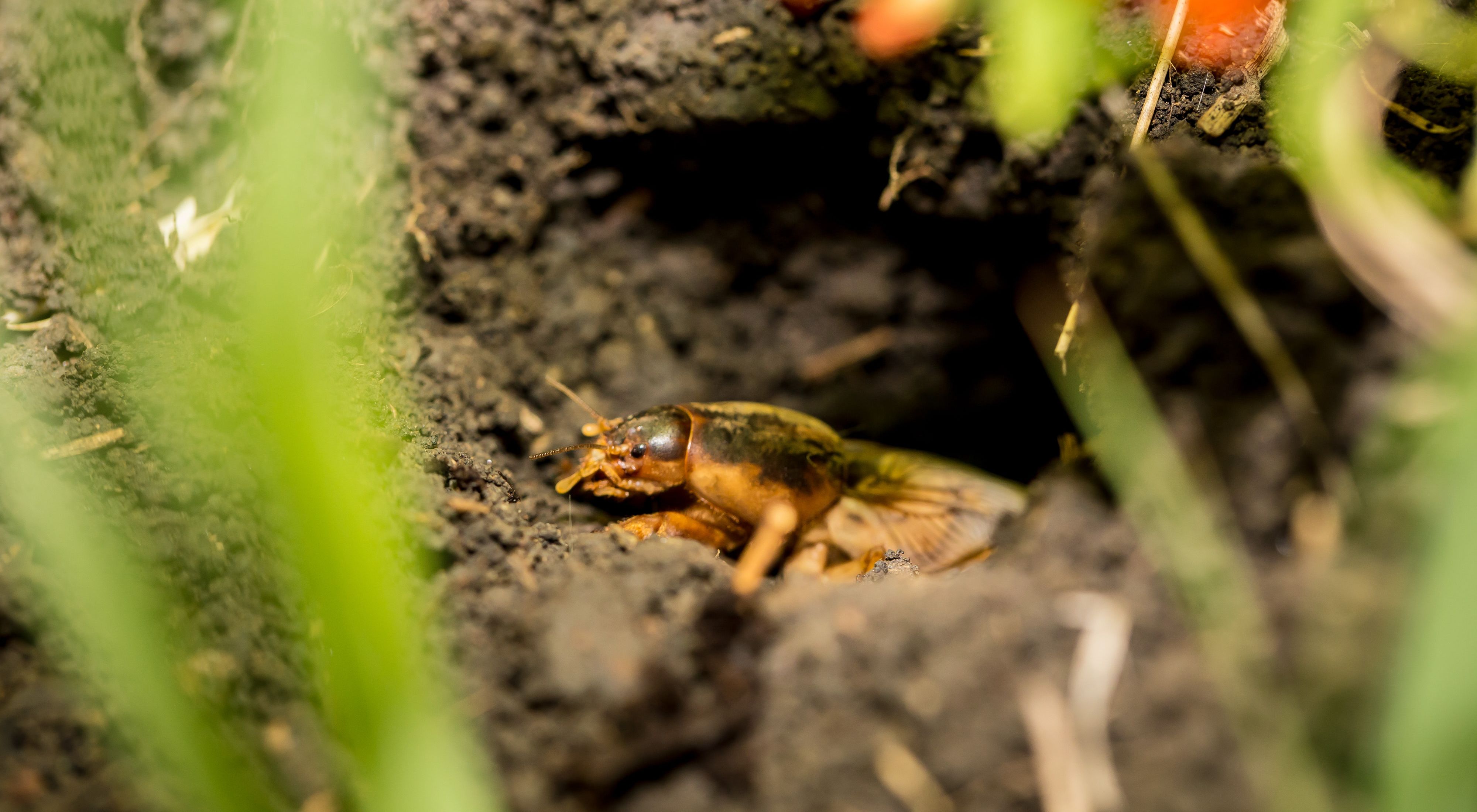Prairie Mole Crickets: Nature's Master Noise Cancelers
These crickets live the majority of their life underground, are rarely seen and have unique sensory skills.
Our Tallgrass Prairie Preserve might just be the research and development site for the latest advancement in hearing aids. What’s a prairie have to do with hearing aids, you might ask? Crickets. Prairie mole crickets, to be exact.
Female Crickets Cut through the Noise
For about four weeks in early spring, male crickets dig burrows and gather in them to sing their mating calls. These burrows are in the shape of a musical horn, and being gathered together this way amplifies their call. This is really important because the male crickets cannot fly.
Females, on the other hand, can fly, and as the males sing their songs, they travel through the air seeking out a particular sound produced by a particular male. How do the females cut through the noise to find their mates? Female prairie mole crickets have a specialized mechanism that allow them to focus on a single stimulus while simultaneously filtering out everything else. And it’s this specialized mechanism that’s being researched for hearing aids.
Quote: Daniel Howard

What we learn from these sensory mechanisms might be applied to the next generation hearing aids.
If your grandparents are like many, they never wear their hearing aids. Why? Simply, they don’t work very well. Sure, they can make conversations easier by amplifying voices. But they amplify everything else in the background, too, making it hard and uncomfortable to distinguish between the different sounds
“It’s fascinating that a little-noticed part of the prairie’s biological diversity might have such an important impact on humans. You just have to love those quirky little prairie mole crickets!” says Bob Hamilton, Preserve Director.
Rediscovering a Species
Until the late 1980s, prairie mole crickets, Gryllotalpa major Saussure, were thought to be extinct. Now, thanks to the efforts of Daniel Howard and his research team at the University of New Hampshire, we are learning more about this incredible species and their unique sensory skills.
The largest threat to this species is the loss of their habitat. Tallgrass prairie is the most endangered ecosystem on the planet. Less than 4 percent remains of its native range, which once stretched from the Gulf Coast of Texas to southern Canada. Fortunately for us in Oklahoma, these mole crickets are an endemic species to tallgrass ecosystems and we have the largest remaining protected tract at the Joseph H. Williams Tallgrass Prairie Preserve.
“Protecting the remaining tallgrass prairie is one of our highest conservation priorities,” says Hamilton.
Singing Crickets
The calling sounds of male prairie mole crickets in a lek during mating season.
Healthy Prairies, Healthy Crickets
In these ecosystems it’s easy to overlook all the life underground. Similarly, Howard and his team have also sampled grassland plots for grasshoppers, you can think of them as above-ground cousins to mole crickets. From these samples they estimate that total biomass weight of grasshoppers is approximate to that of the bison at the preserve. Read that sentence again and remember that one bison can weigh 2,000 pounds.
“That’s very cool, but I’m not real surprised,” says Hamilton. “Research has likewise shown that the biomass of prairie roots is far more than the biomass of the vegetation we see above ground.”
The next time you look out across the prairie remember the vibrant and dynamic world underneath your feet.
Lost Cricket Project
Dr. Howard and his research team are conducting a statewide survey through the Lost Cricket Project for these small prairie songsters starting this spring.
The Lost Cricket Project, a citizen science volunteer program, is currently looking for help to find new populations of prairie mole crickets in Oklahoma. By participating in this project you can help collect valuable scientific data all with an app on your phone! This information will be used to help manage this rare native Oklahoma species.
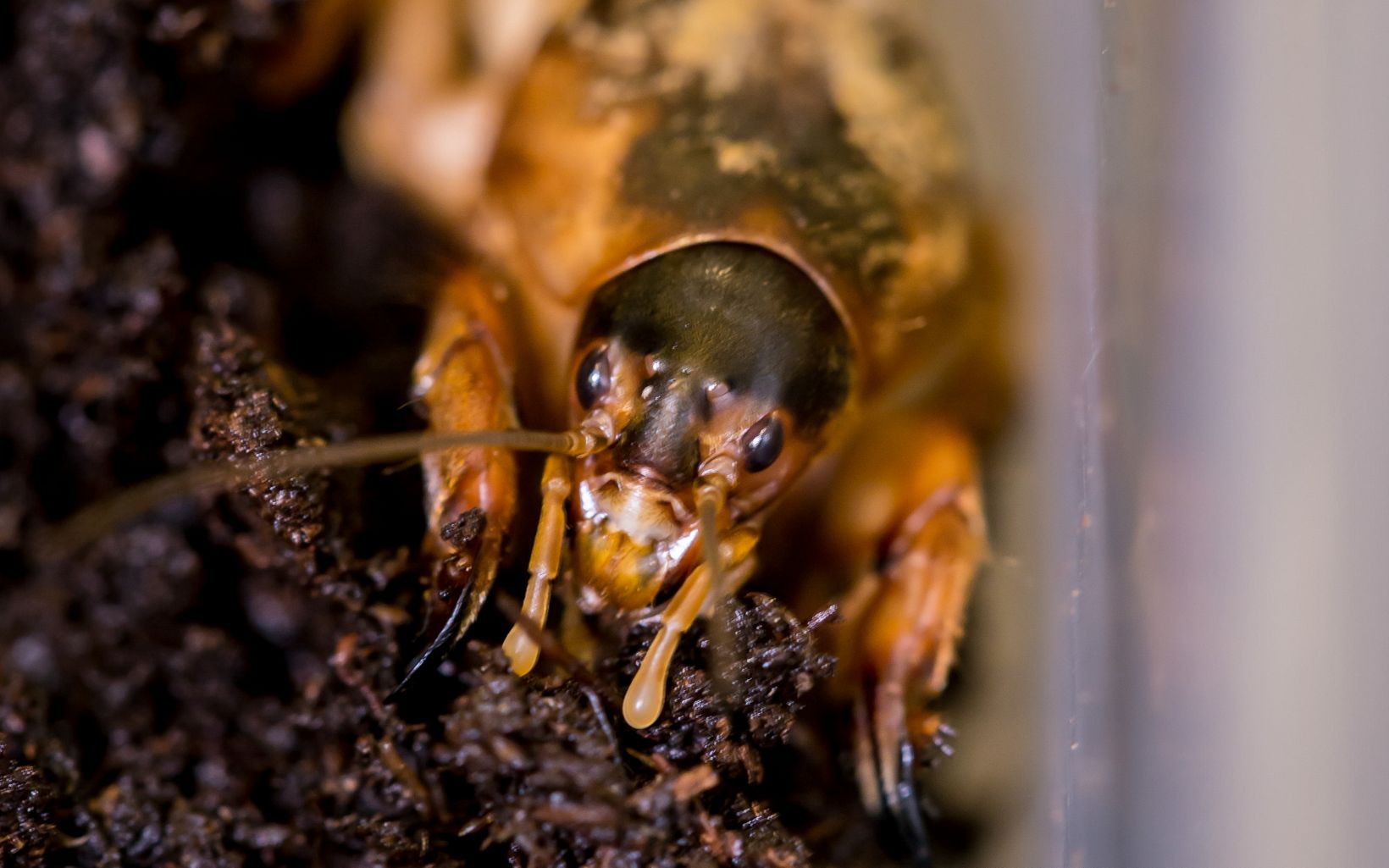
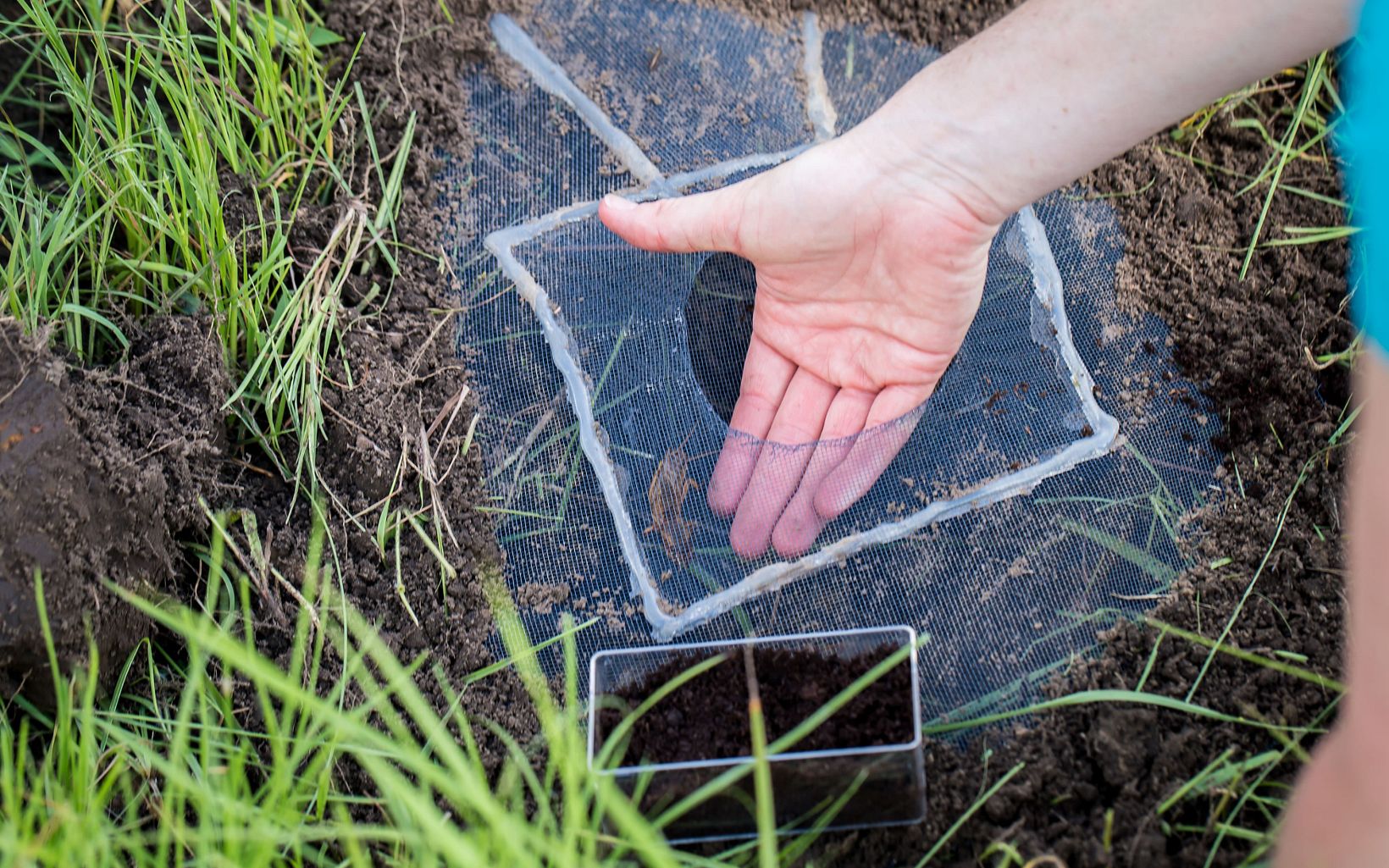
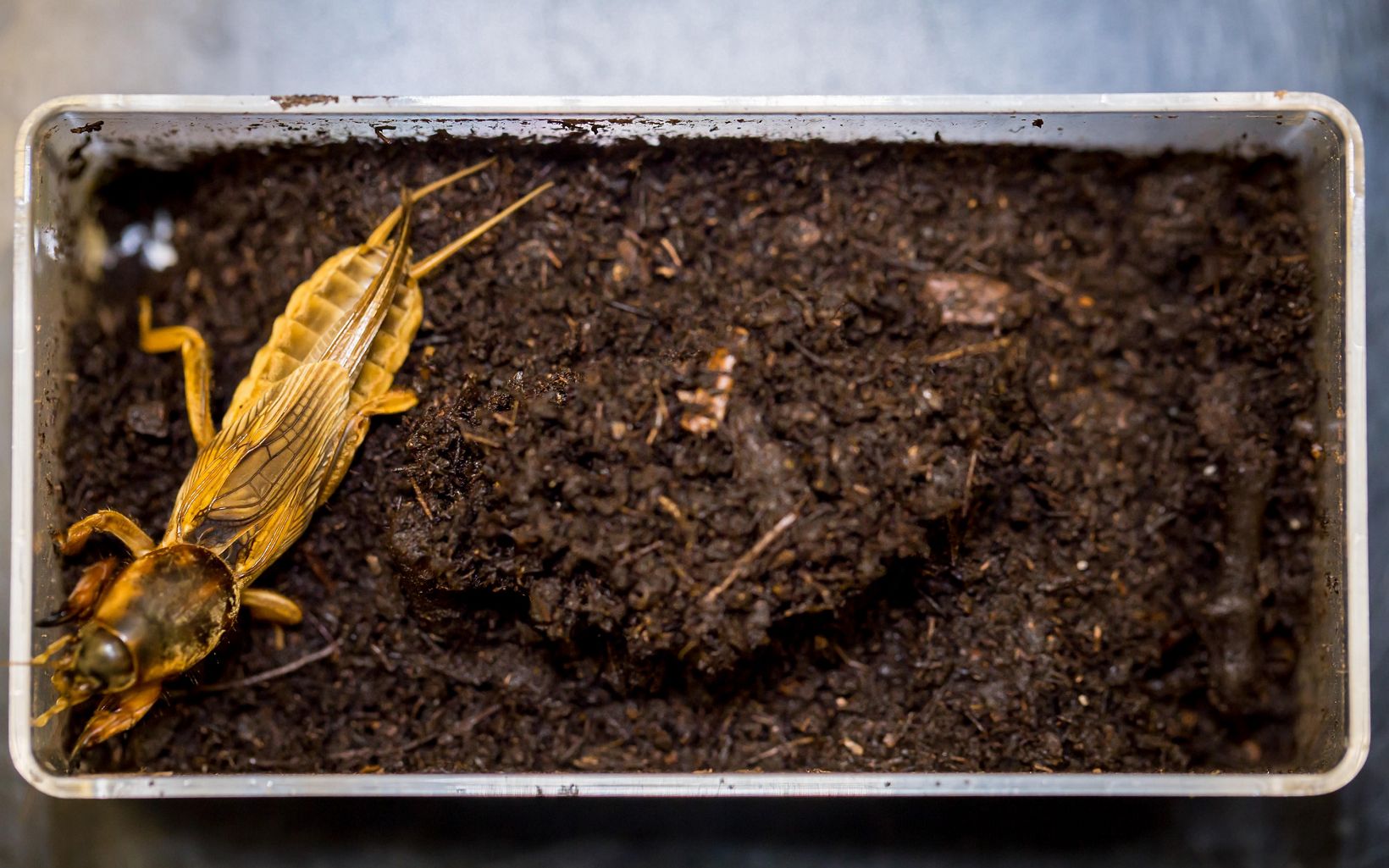
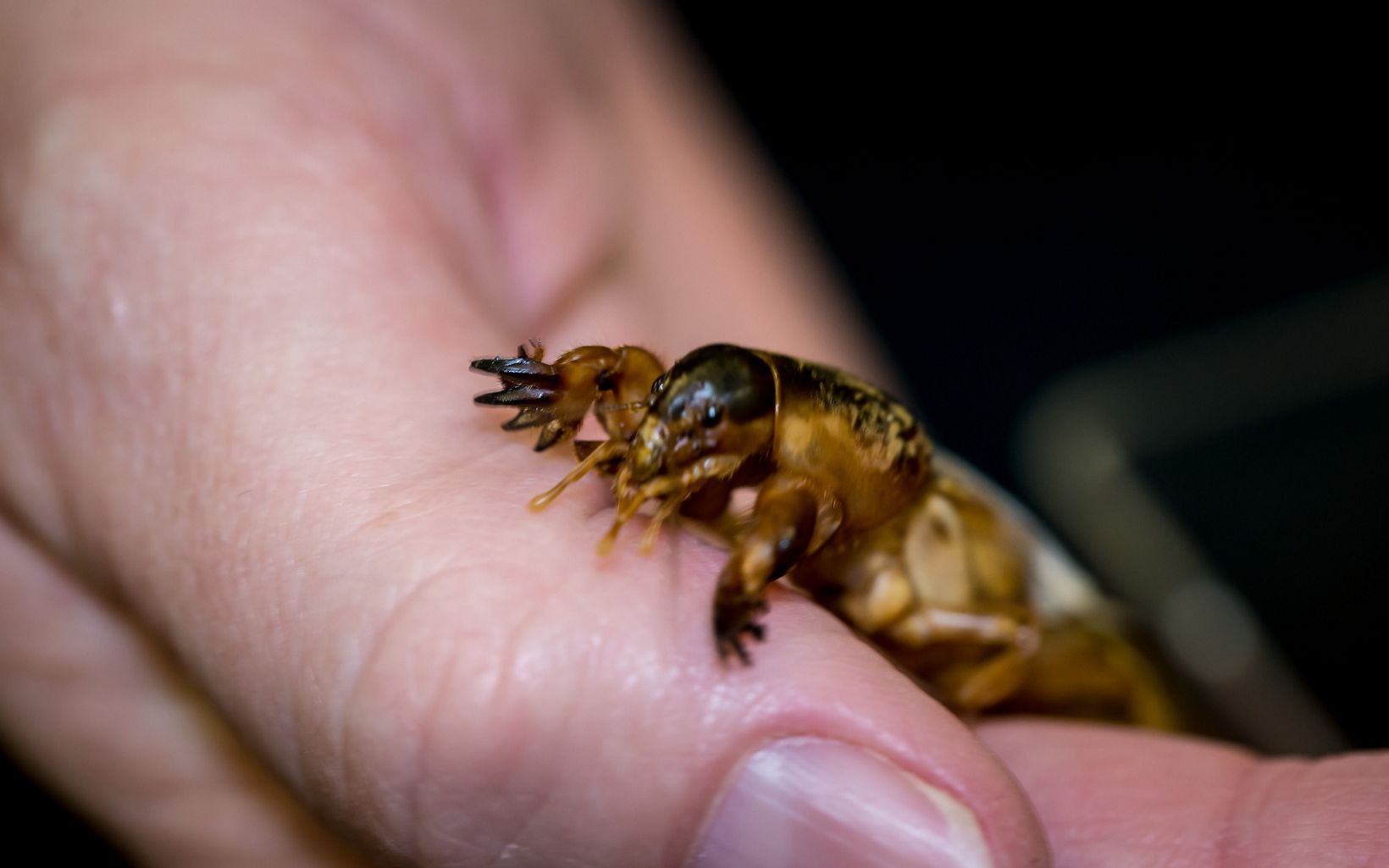




Support Our Work
Donate now to help ensure a thriving natural environment for future generations in Oklahoma.
